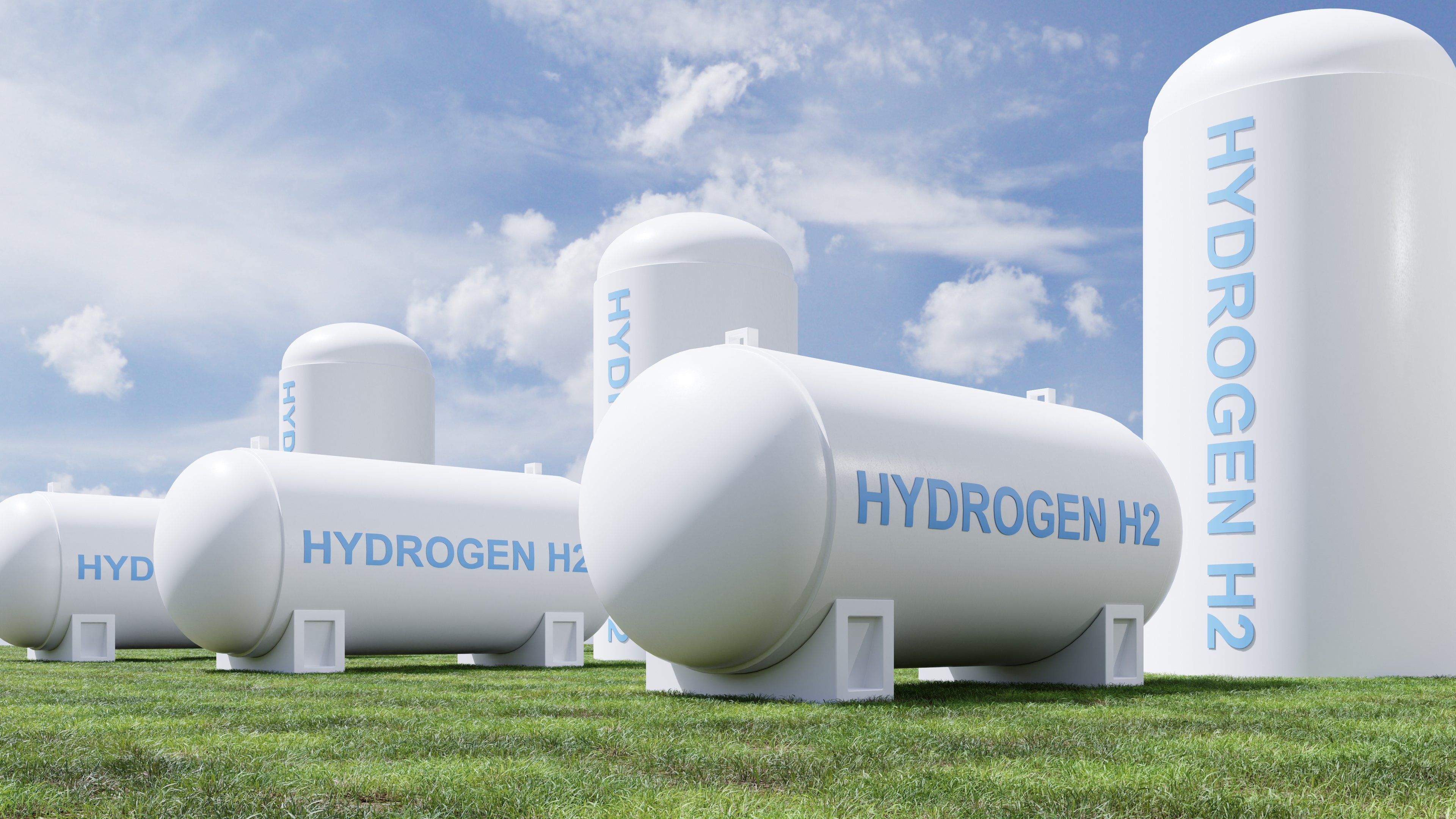Here's a total understatement: The U.S. oil industry has been impacted by the coronavirus pandemic.
"Impacted"? More like, "destroyed." More than 95% of Americans are under stay-at-home or similar orders, and are neither driving nor flying. U.S. benchmark WTI crude prices fell to negative $37.63 on Monday, and the average U.S. price for a gallon of gasoline is well below $2.
This might seem like an opportunity for alternative fuels like hydrogen fuel cells. But it's actually a huge threat to hydrogen fuel cell companies like Plug Power (PLUG +4.42%), Ballard Power Systems (BLDP +3.33%), and Bloom Energy (BE +7.26%). That's because COVID-19's impact on oil is likely to undermine a key argument that they've used to secure customers.
Here's how.

Image source: Getty Images.
The balancing act
Hydrogen fuel cells are an odd duck in the alternative fuel industry. As a transportation fuel source, they've taken a back seat to battery technology. While Ballard Power Systems and Plug Power are trying to make inroads into the heavy-duty vehicle market (delivery vans, trucks, buses, and trains), right now fuel cells are largely limited to powering forklifts and airport safety vehicles.
Meanwhile, as a potential electric power source, they've likewise been eclipsed by solar and wind power. The fuel cell generators manufactured by Bloom Energy primarily function as small-scale or backup generators.
The other reason they're an odd duck: They aren't necessarily a "clean" or "renewable" power source.
Clean vs. green
To be clear, a hydrogen fuel cell itself generates clean power; water and heat are its only by-products. But that hydrogen has to come from somewhere. It can be extracted from landfill biogas, or even seawater, but the most common source in the U.S. is plain old natural gas. Due to new shale extraction technologies like hydraulic fracturing ("fracking") and horizontal drilling, the U.S. has been awash in cheap natural gas for years.
Because natural gas is a hydrocarbon -- a mix of hydrogen, carbon, and oxygen -- if you take away the hydrogen, you're left with just carbon dioxide (a greenhouse gas) and a bunch of nasty impurities like sulfur and arsenic. So up until now, fuel cell companies have had to rely on another compelling argument: fuel cells may not be completely green, but they're cheap.
Installing a fuel cell generator costs less than putting up a solar array or wind turbine, so as long as natural gas prices are low, Bloom can woo customers by offering green-ish power with lower up-front costs and ongoing access to cheap fuel. In the company's April 2020 presentation, for example, Bloom advertises a "lower and predictable cost" in states where it operates.
Plug Power and Ballard Power make the cost argument as well, with Plug claiming its fuel cells can provide 5% to 6% savings over batteries, and Ballard making the bold prediction that within 10 years, it will be cheaper to operate a fuel cell vehicle than a battery or diesel vehicle, in part because hydrogen fuel costs keep dropping.
The coronavirus fallout may turn that analysis on its ear.
Up, up, and away
Because shale drilling is comparatively expensive, most shale producers need oil prices to be at least $50 per barrel before they can turn a profit. Thanks to the coronavirus, lack of demand has dropped U.S. benchmark WTI crude down to $20 per barrel. So, many U.S. drillers are simply shutting down their shale operations.
Most shale producers, though, extract both oil and gas. If shale drilling goes away, so will a lot of that domestic oversupply that's kept natural gas prices so cheap for so long. Sure enough, since the beginning of March 2020, natural gas futures contracts for March 2021 have risen 23.1%, to $2.88. That's a 58.2% premium to the current natural gas benchmark price of $1.82, indicating the market is expecting a big jump in prices. Depending on how many companies give up on shale production, the actual price spike could be much higher.
According to the International Energy Agency, natural gas prices represent about half the cost of hydrogen production. So a natural gas price spike of between 23.1% and 58.2% would raise hydrogen production costs by a midpoint of about 20%. According to Forbes, Bloom Energy's fuel cell generators provide electricity at $0.135/kwh without government subsidies. Tack on 20% in higher fuel costs, and you're looking at $0.162/kwh, more expensive than average grid power in all but seven U.S. states.
And, of course, if gas prices rise but oil prices stay low -- a strong possibility since the U.S. imports lots of oil from overseas, but virtually no gas -- Ballard's and Plug's fuel cells suddenly become a lot less competitive with traditional gasoline- or diesel-powered vehicles that cost less and can be filled up for a song.
It doesn't look good
Fuel cells were already having problems during the era of cheap gas. Neither Plug nor Bloom has ever turned a profit on a trailing-12-month basis, and Ballard hasn't done so since 2010. Fuel cells also aren't as clean as truly renewable sources.
Basically, one of the only big arguments in fuel cells' favor was low cost. If that argument gets swept away because the coronavirus pandemic destroys U.S. shale production, it could be the final straw for one or more of these troubled companies.








